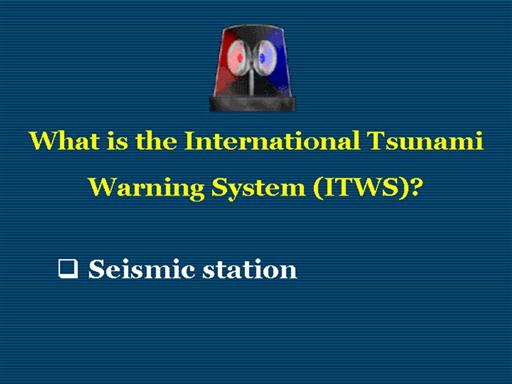| front |1 |2 |3 |4 |5 |6 |7 |8 |9 |10 |11 |12 |13 |14 |15 |16 |17 |18 |19 |20 |21 |22 |23 |24 |25 |26 |27 |28 |29 |30 |31 |32 |33 |34 |35|36 |37 |38 |39 |40 |41 |42 |43 |44 |45 |46 |47 |48 |49 |50 |51 |52 |53 |54 |55 |56 |57 |58 |59 |60 |61 |review |
 |
“A seismic station is a laboratory that has equipment that can detect, monitor and record earthquakes locally or anywhere in the world.
q
A functioning seismic station must be able to perform many different functions and determine important parameters of an earthquake such as magnitude, depth, and epicenter.
q
qIt
must have the
ability to communicate effectively
with other seismic stations and to share data.”
q
Citation source: http://www.drgeorgepc.com/TsunamiFAQ.html
Tide Station:
“A tide station has one or more calibrated instruments, called tide gauges, which have the ability to measure long and short term changes in sea level from astronomical tides or long period waves such as tsunami waves of surges.
q
Tide stations in the ITWS telemeter their data via satellite to PTWC and other regional warning centers.” |